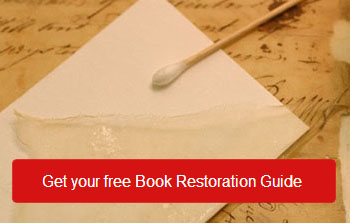If youve found rare books in unlikely places, such as garage sales or in long forgotten boxes, youve probably also encountered books that are in less than pristine condition. These books may be valuableand downright dirty. But should you clean these rare books, or leave the dirt as part of the books patina?
When to Clean Rare Books
From the perspective of a rare book dealer, the definition of dirt is very broad. Dirt is any foreign material that doesnt belong on or in your book. Dirt not only detracts from the appearance of your books; its also abrasive and can contribute to deterioration.
With the right tools, some cleaning can be done at home. Its important to remember that the purpose of any cleaning isnt necessarily to remove the patina a book develops over time. Cleaning should be done when it will protect a rare book from future damage.
Tools for Removing Dirt
Most surface dirt can be removed with relative ease. Youll want to use the least abrasive cleaning agents possible, to prevent damage during cleaning. As a rare book collector, you can assemble a rare book cleaning tool kit. A few items that are indispensable:
- Soft cloth: Old t-shirts and towels can be cut into small pieces for cleaning your books. Youll want to use a material thats lint free and light colored. A soft cloth is safe for just about any book material; its also the only material you should use to wipe gold leaf.
- A soft-bristle toothbrush: A baby toothbrush is often an ideal tool for cleaning spines, embossing, stamping, and edges. Dont just use an old toothbrush for this task; get a new one thats free of residue.
- An artgum eraser: Theres no better tool for removing smaller smudges or stray marks. An artgum eraser crumbles easily, so it wont leave marks or damage a books pages. Be sure to rub the eraser in one direction only.
- Absorene Dirt Eraser: This tool looks like a little dry sponge. It can be used on a wide variety of paper products without causing damage. This tool is made of pliable material, so its also very easy to use.
- Vaseline: Vaseline is petroleum jelly, and it can be used to remove smudges from dust jackets. Wipe some on the smudge, then wipe it off with a soft cloth or a document cleaning pad.
Under no circumstances should most household cleaners or supplies (such as nail polish remover) be used on rare books. These substances are often too stringent and may cause more damage than the dirt youre removing.
For more information about maintaining and protecting your rare books, check out our archive of articles about conservation.









